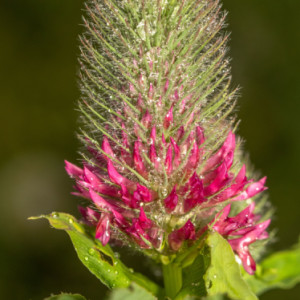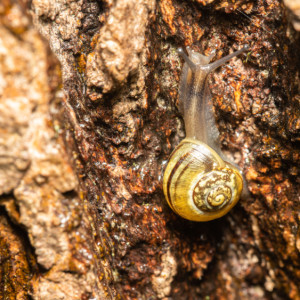So today it rained...and rained and rained. After sweltering in 29 degrees on Wednesday, today we struggled to reach 14 degrees. I eventually braved a quick walk round the sodden garden, where I found many snails (mostly White-lipped) climbing the north side of our willow tree - none on any other part of the trunk.
The only other objects that caught my attention were the seed-heads of Water Avens and Ivy-leaved Cyclamen. The latter originates from the Mediterranean but is widely established in the UK and seems to be spreading in response to climate change. After the blooms fade, the flower stems elongate and curl, spiral, or arch down toward the soil. At the end of each stem, a round seed capsule forms which hold 6-12 seeds. The way the stems curl or arch down toward the soil is nature’s way of easily depositing the seeds on the ground. When the seed capsules are ripe, they split open on the top and release the seeds which are coated with a sticky, sugary substance that attracts ants, other insects, birds, and small mammals. The small creatures take the seeds, eat the sugary substance, and then generally leave the seeds. This is nature’s way of propagating new plants away from the parent plants and also scarifies the seed.
The flower-heads of Red Feather-clover looked wonderful, covered with water-droplets. This species is a native of southern and eastern Europe, but is a good addition to a wildlife garden, as it provides large heads of nectar-rich flowers, much loved by bees.



Comments
Sign in or get an account to comment.


